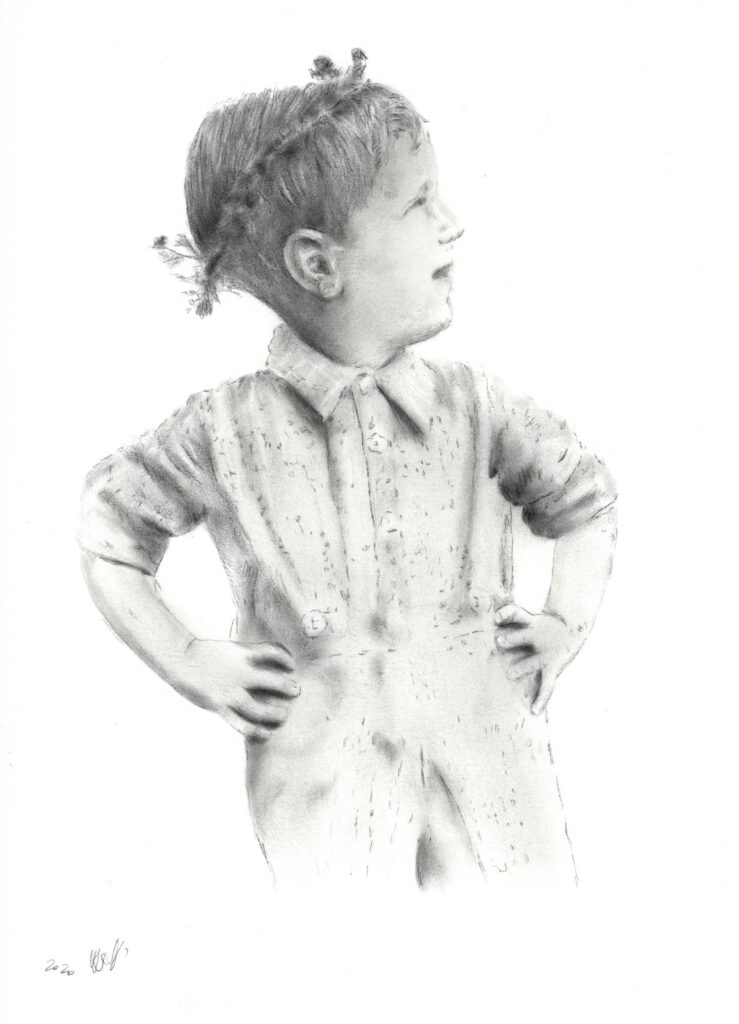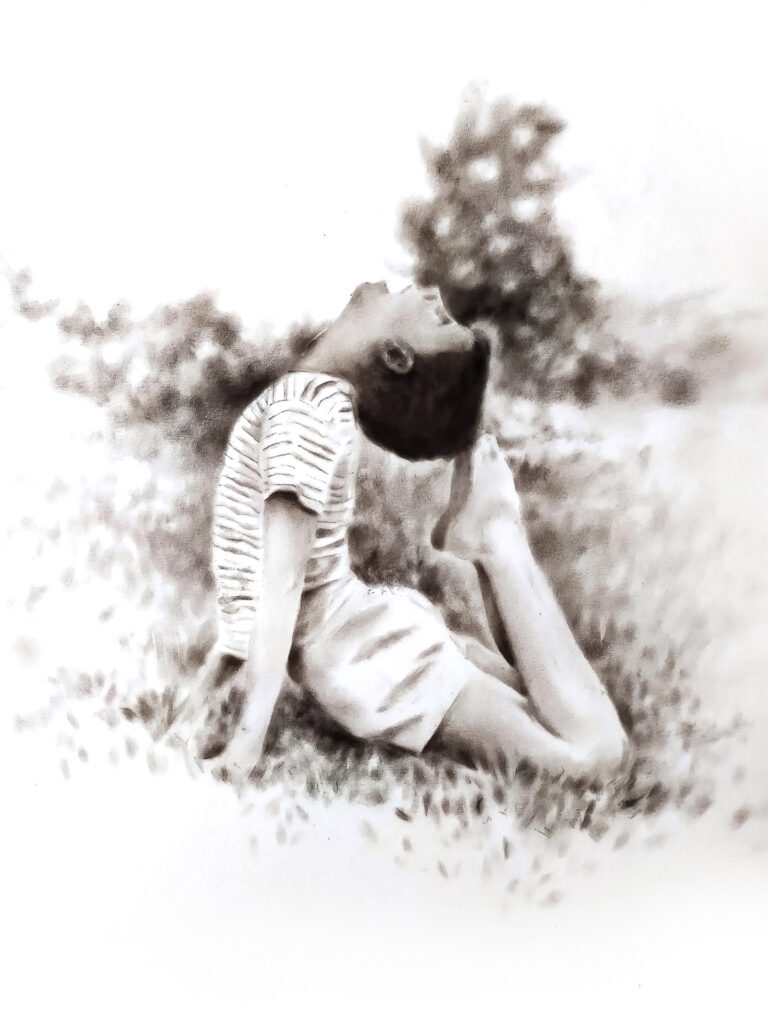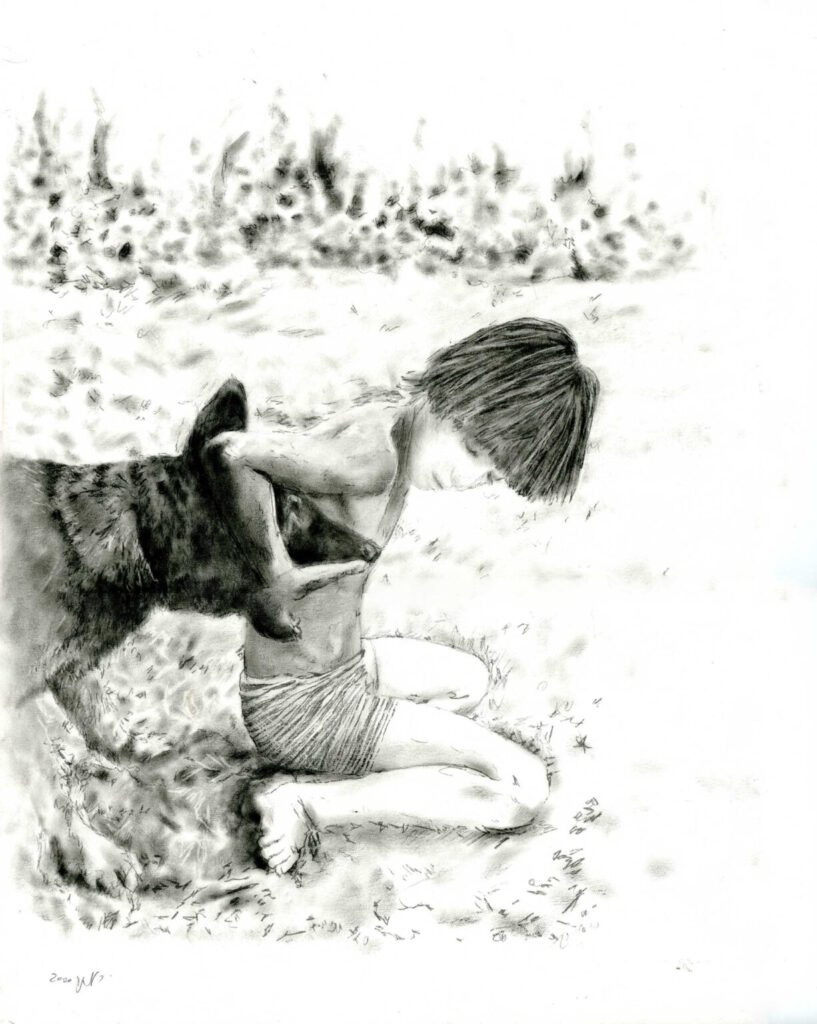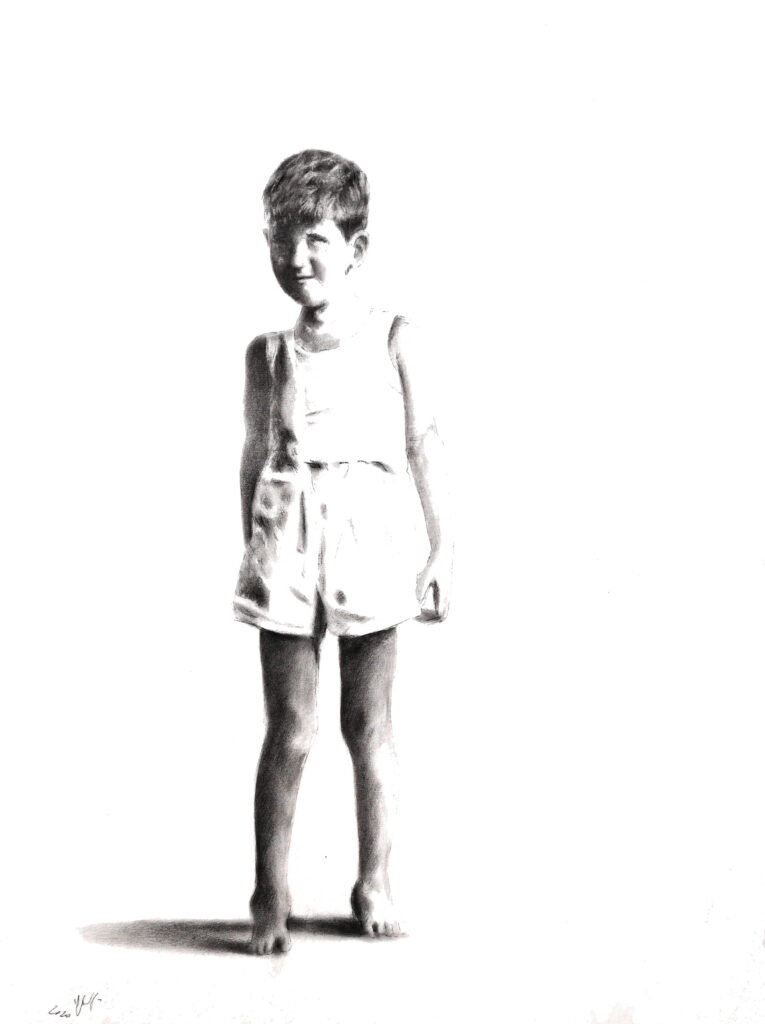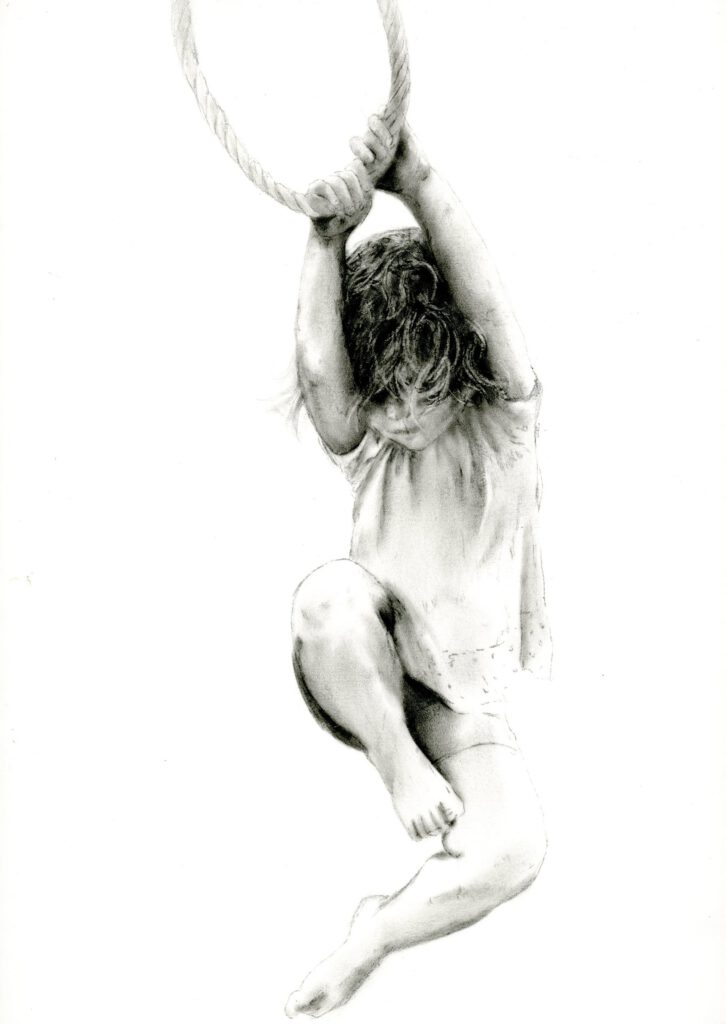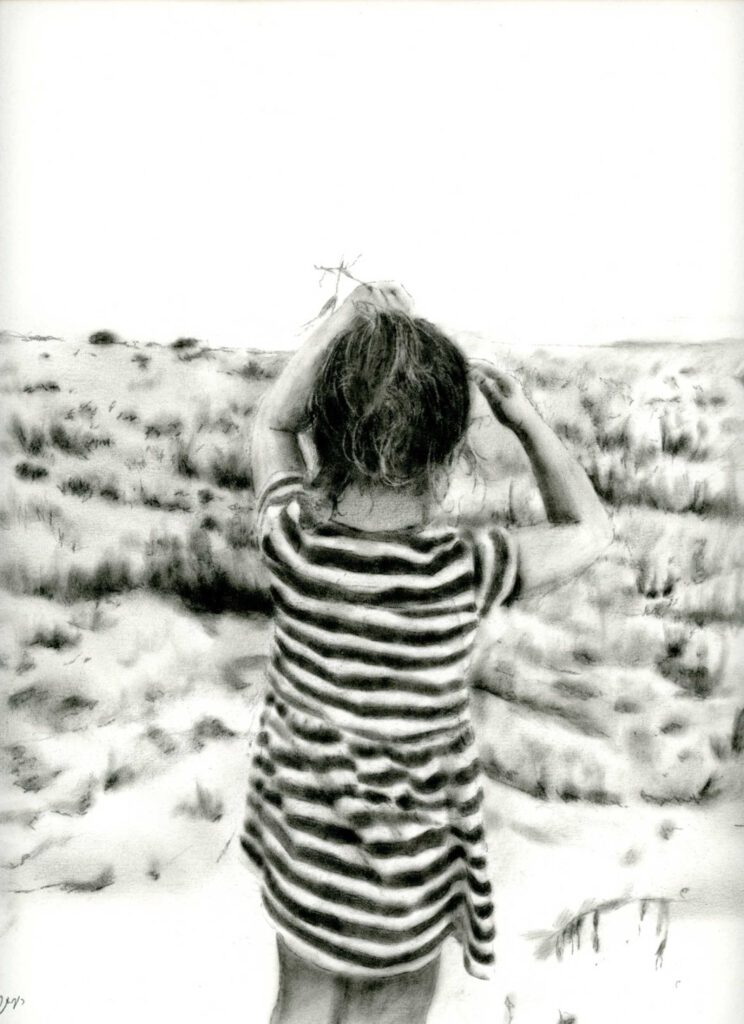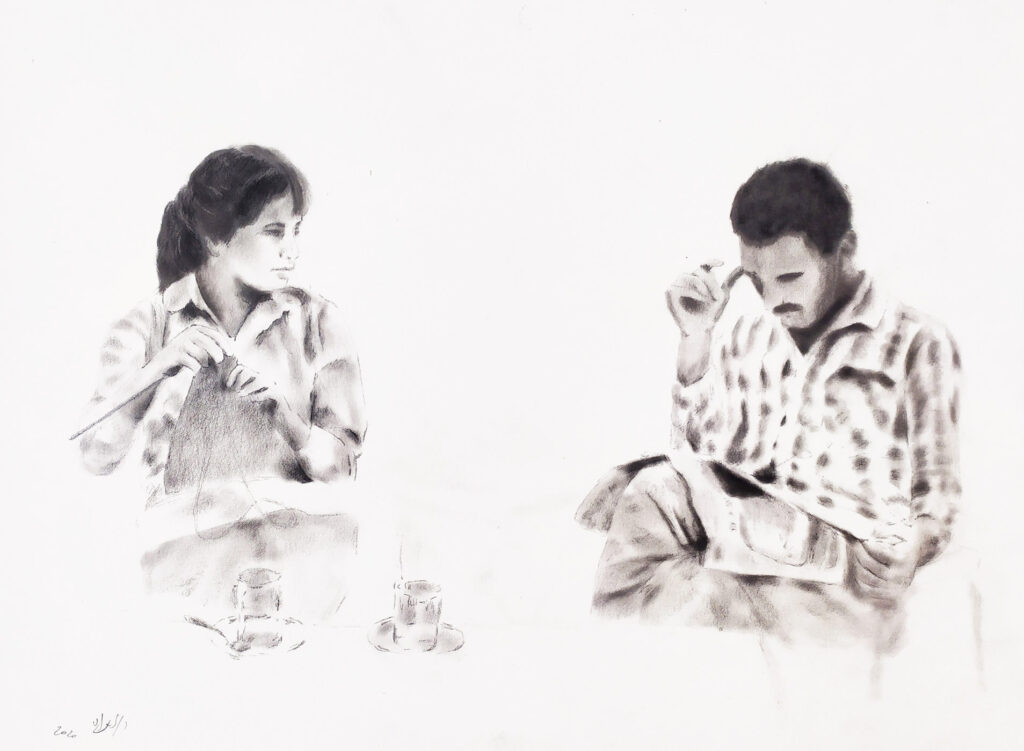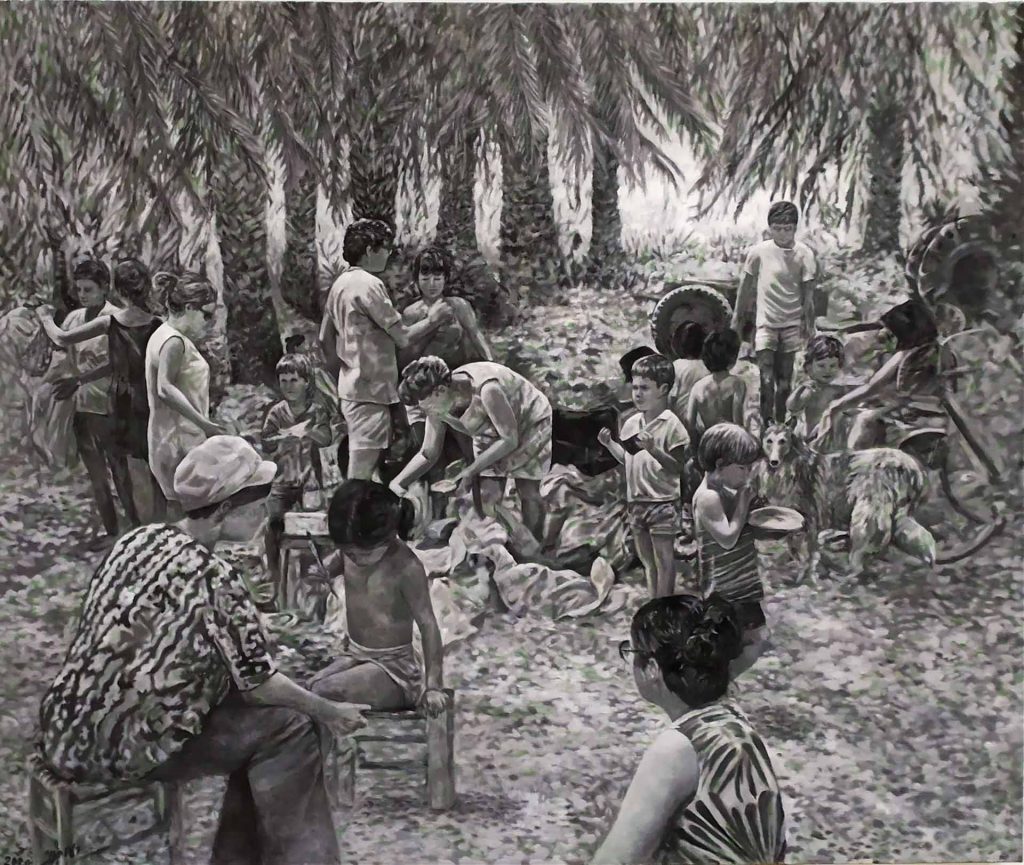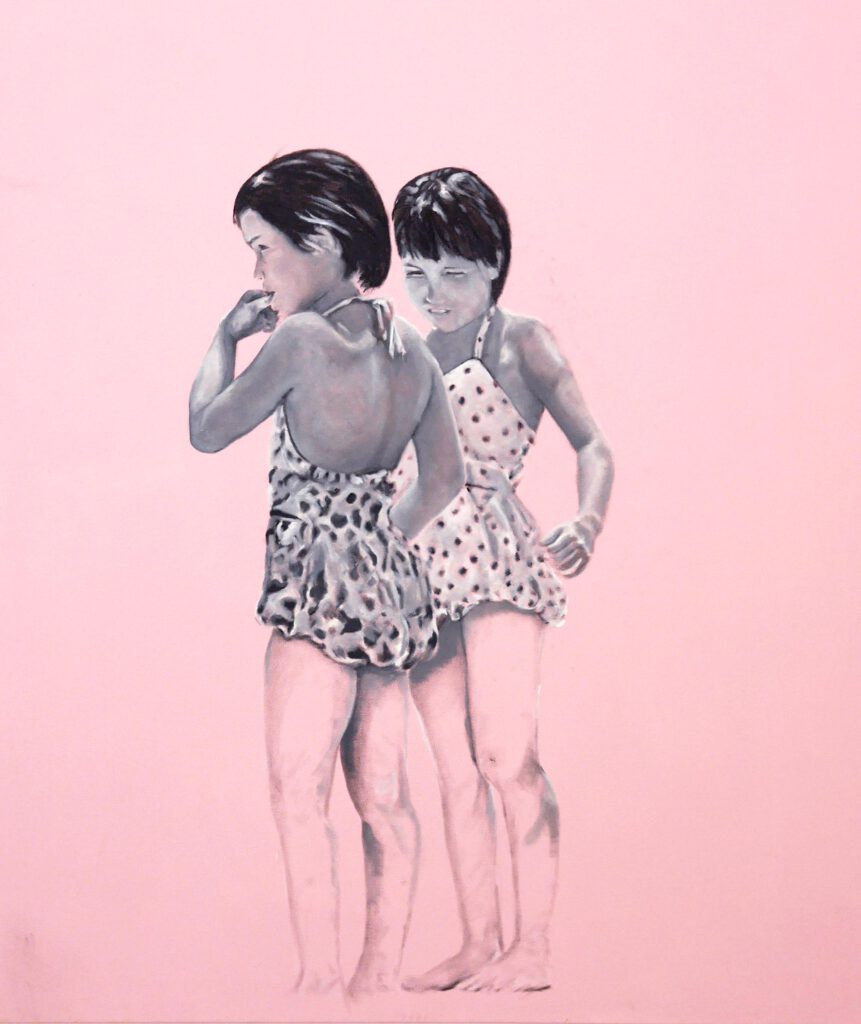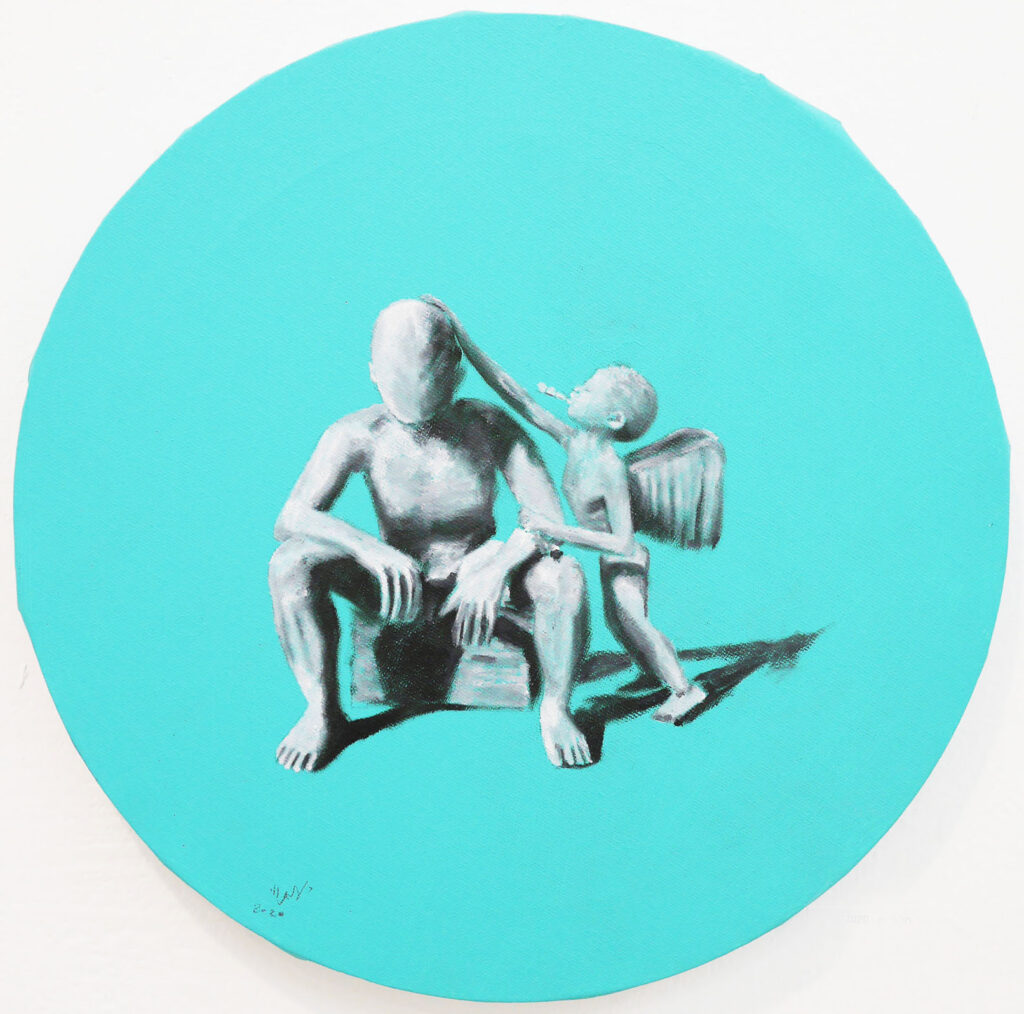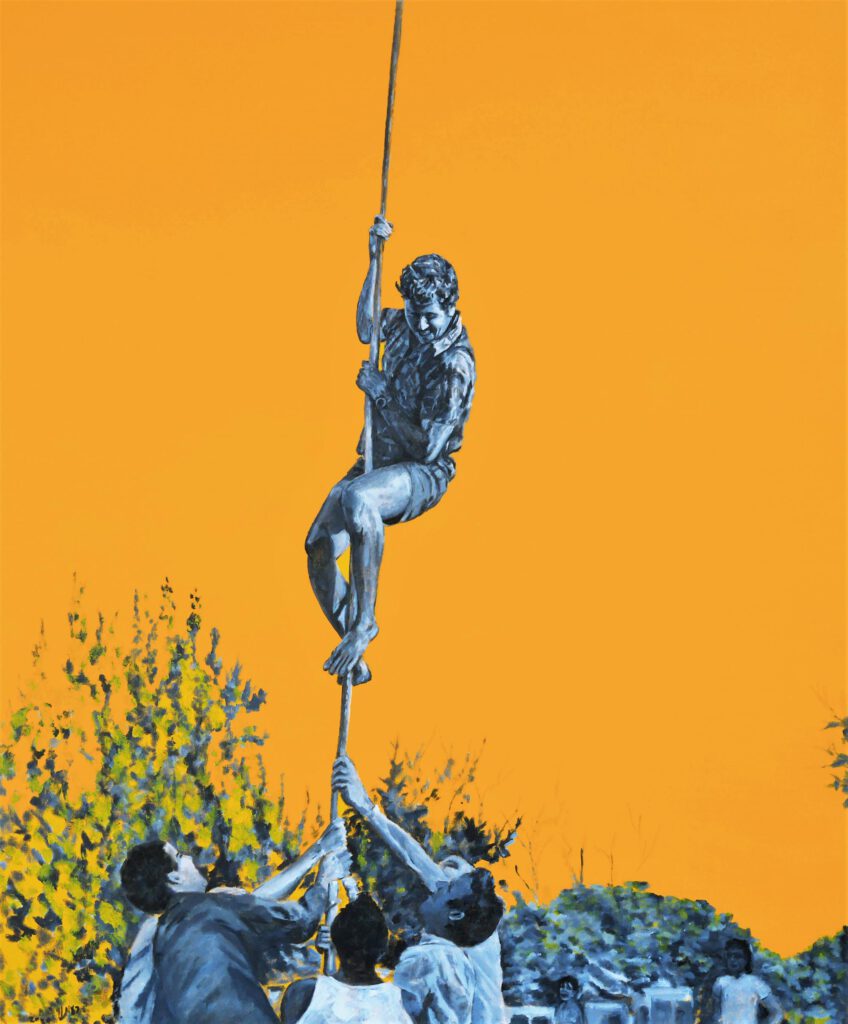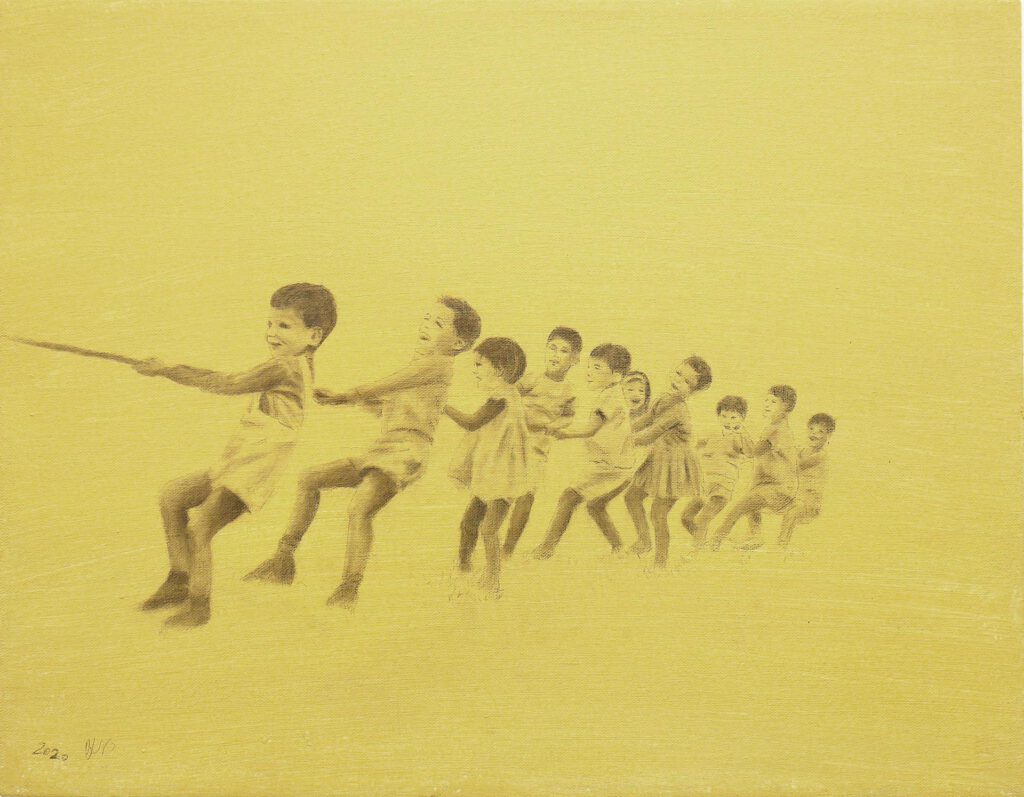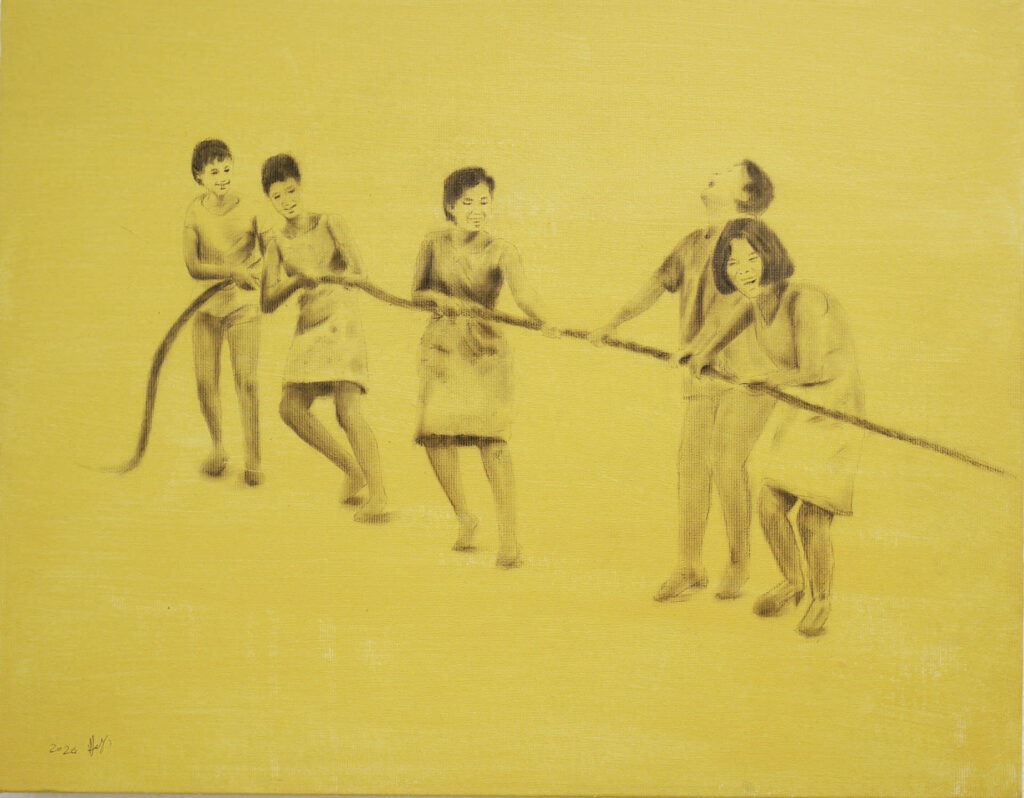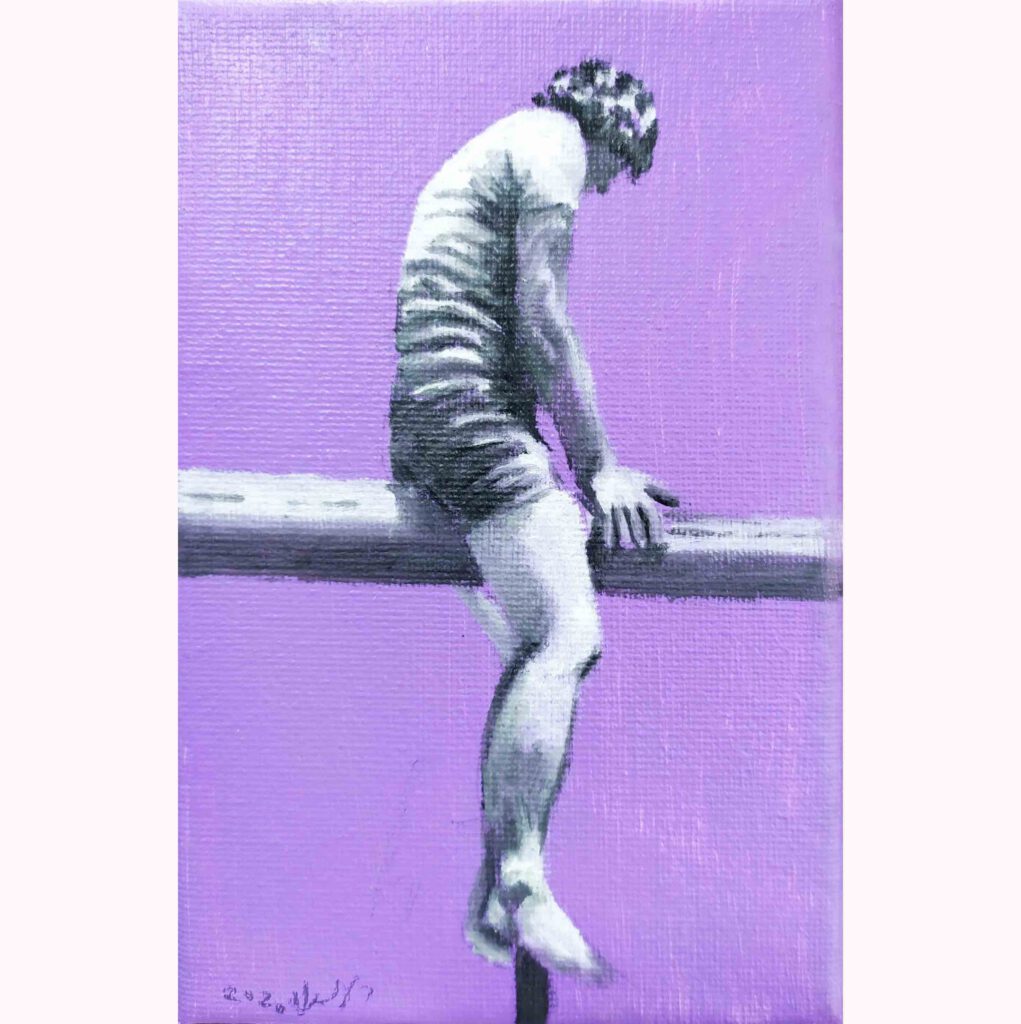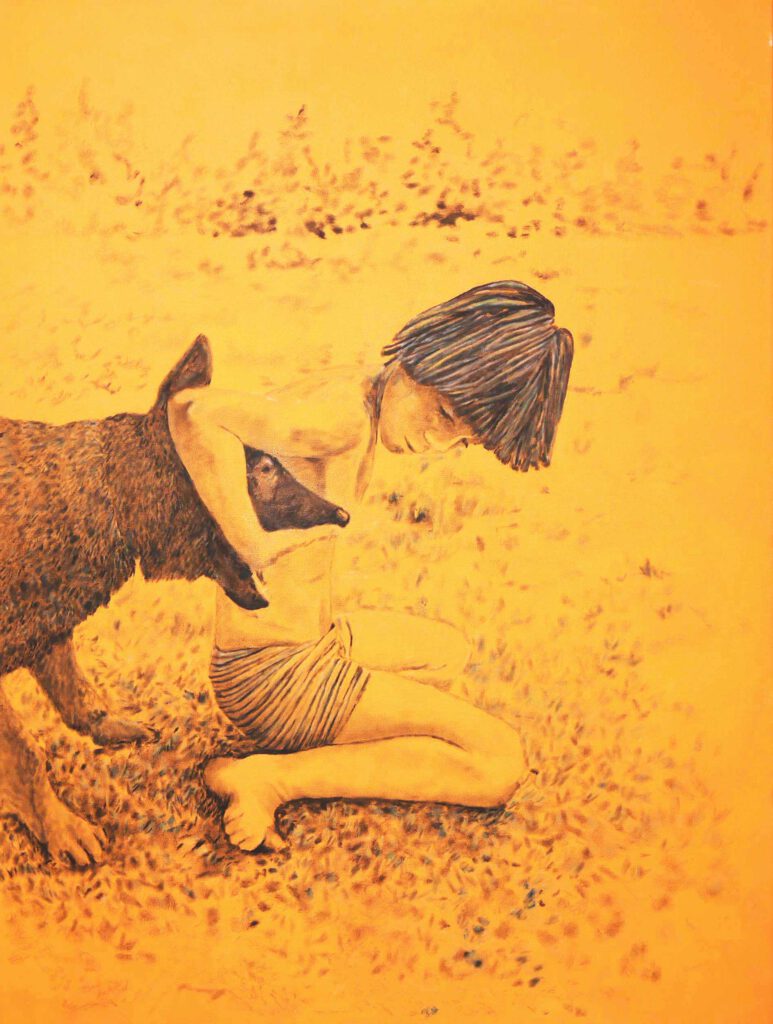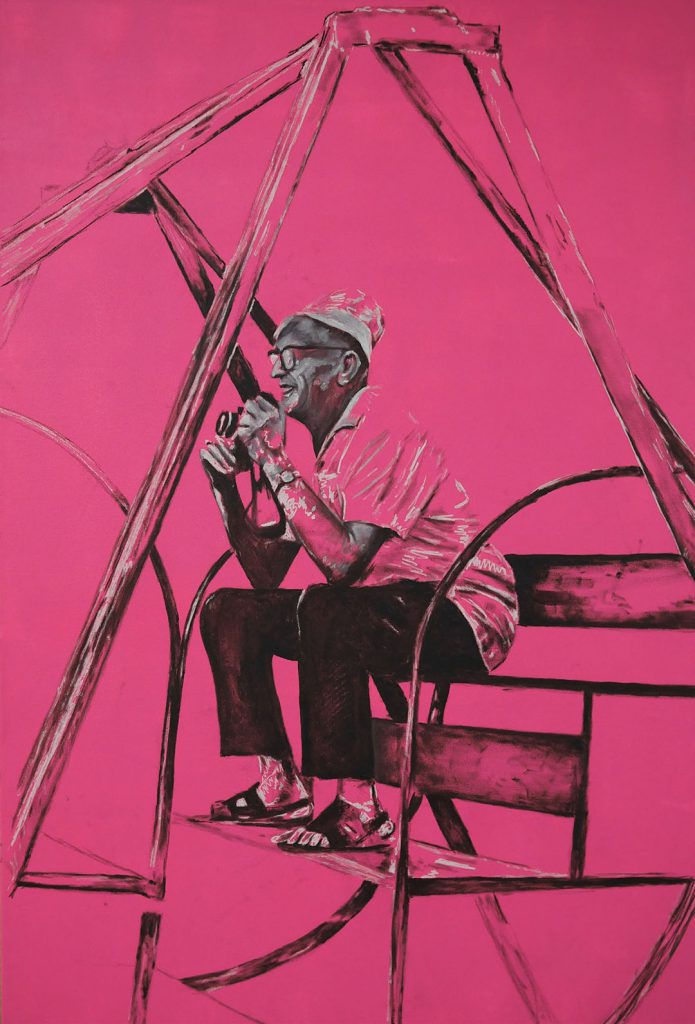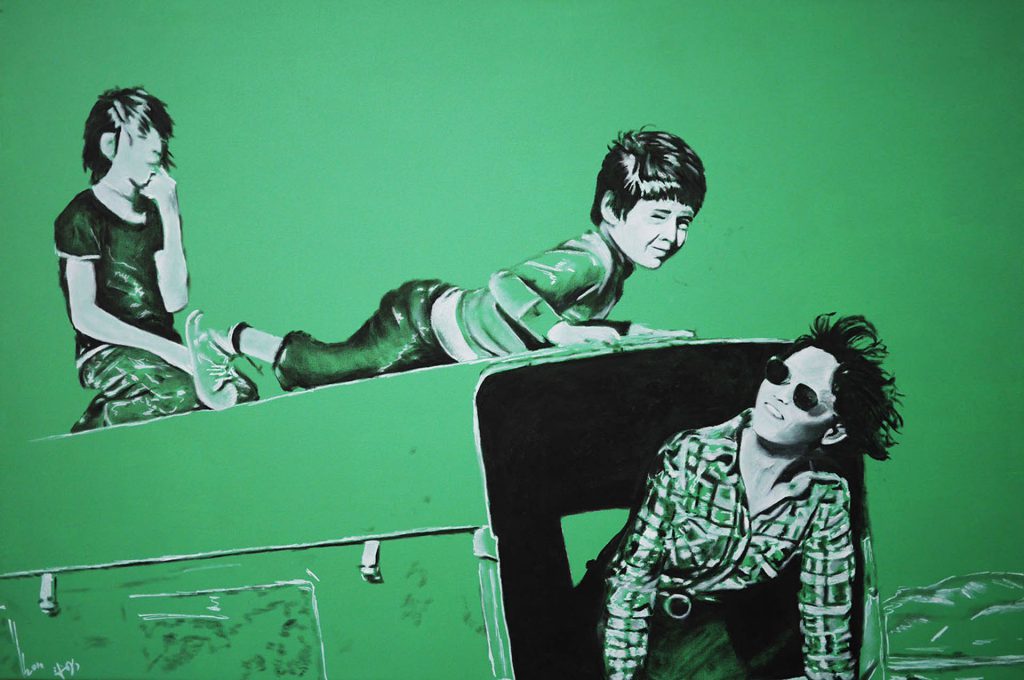Sense of Belonging
A series by Reut Dafna
Reut Dafna (b.1981) is a resident of Kibbutz Maoz Haim, and married to a third generation of one of the founding families. The paintings in this exhibition took two years to produce – 2018-2020 – and is an investigation into the character and core of the kibbutz. Dafna achieves this through illustrative adaptations of photographs from family albums belonging to the Dafna family and other kibbutz members, dating from the 1930s to the present. Dafna’s interpretation of the photos taken by Avital Dafna, her husband’s late grandfather, and others, conveys her deep desire for connection. She searches for a place of belonging and familiarity, to become one with the kibbutz’s roots, character, and spirit, which together form its very essence.
Her personal interpretations of photographed scenes are accomplished through charcoal powder paints on paper, and paintings that call attention to intense colors, which enhance the presence of gray monochromes, as they wax and wane, drifting around an axis of black and white. At times, they are compressed and loud, as if wedging in as much as she can to create a tight fit; other times, the viewers finds themselves facing a void: stark, flat, and mute, as if appealing to them to complete what had once taken place but has now vanished from the senses.
And what, if anything, has vanished? Could it have been a vision, already realized, and now lying broken and discarded? Was it indeed accomplished or is it still oscillating on its axis, ebbing and flowing like an unfulfilled dream? Innocent questions are raised and mounted on canvas.
A relentless process of pursuit, which begins with the basics – tangible questions concerning names and faces in the family albums – and then expands into questions of a socio-economic nature regarding the community’s past,
the collective, the cooperative, values, equality, land, and Jewish manual labor.
Maoz Haim is conveyed as a mirror reflecting the psyche; an echo of the kibbutz collective whose exterior has met with change.
In one of the paintings, the year is 1971, and Grandfather Avital sits in a children’s park swing, his camera in hand. His image is almost transparent, as it recedes into a bubble gum pink background. On the other hand, kibbutz members are gathered together in the 1972 scene of Picnic among the Dates – a community partnership encapsulated in a single tightly-woven fabric. Yet another artwork depicts the late Ehud Dafna, and we recognize him as Hudi Hamudi, hu ben Avital, She’ela rishona et avihu sha’al… [Sweet little Hudi is Avital’s son He’s about to ask Dad question number one], the loveable child, who bravely fell in battle during the Yom Kippur War, and ultimately became a national hero.
The motifs appearing in the illustrated versions of the various time periods forge a connection between the egalitarian cooperative of the kibbutz’s early days and the present. Among the series of works is Climbing a Pillar, and indeed, Tug of War, in reference to the traditional, competitive game played on the kibbutz. The threads that combine to make up the rope, symbolize the collective. The course of the investigation reveals only partial answers to the questions. A community reluctant to uncover their past memories offers the artist but a fragmented glimpse, which is the only access she has to extract the insight she seeks, and a sense of belonging.
Exhibition curator: Nurit Tal-Tenne
Hudi Hamudi, written by Moshe Dafna, 1942.

